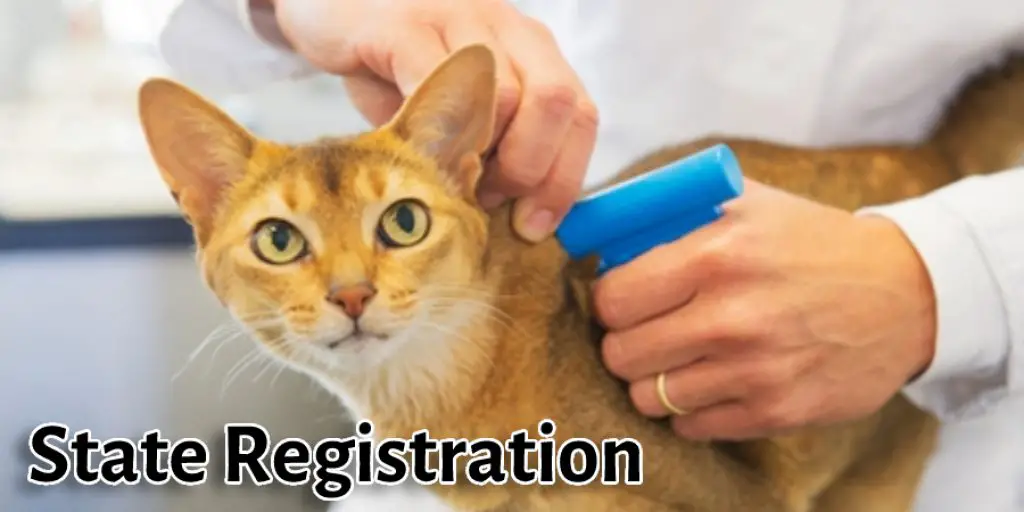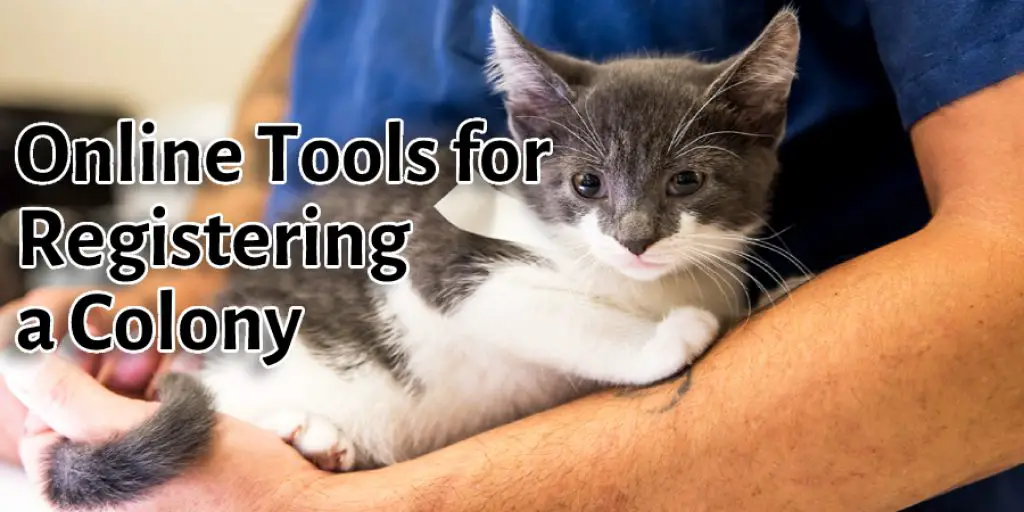When you finally buy a cat, it’s important to register them. Registering your new pet is an important part of being a responsible owner. Registration tells the authorities who you are and where your pet lives, so if they get lost or stolen, they can be returned home safely. It also allows animal control officers to find out if there have been any complaints about your pet and whether they’ve been spayed or neutered.

Finally, registering your cat will protect them from getting lost and from breeding with other unregistered cats in the neighborhood – helping to reduce the overpopulation of felines in shelters and on the streets. It’s a small price for all these benefits! Here’s a quick guide on how to register your cat without papers.
Contents
Why Registering a Cat Is Necessary?
Registration is the only way to prove ownership of your cat, should they become lost. A registered cat could also be eligible for a reward if found and returned to you by a Good Samaritan.
Adding your contact information to the pet registration helps law enforcement agencies reunite you with your pet if it becomes lost or stolen. Include your name(s), street address, email address, and phone number on the registration for the best chance of being reunited with your furry friend.
If your cat wears an identification tag with your contact information on it, you will have a better chance of getting him back if he is lost or stolen! Remember that pets are still considered valuable property under state law, and thieves can be charged with theft if they steal a pet. Don’t forget about the collar! The best thing to put on your cat’s collar is an identification tag with your name, address and phone number. You should also consider microchipping your cat. This can be done at the shelter.
Registration is the only way shelters can return a lost cat to you should it be brought into one after being picked up as a stray. Unfortunately, shelters do not have the time or resources to scan for microchips or tattoos, nor do they have funds to run costly ads searching for an owner (many of us are volunteers who work full-time jobs!). To find more homes quickly, shelters must legally make every effort possible in holding onto a pet that comes in as a stray.
Types of Registration for Cats:
There are two types of registration for a cat. The first is with the state, and the second is with an association organized by breeders.
State Registration:
To register your cat, start at the local animal shelter or humane society office. They will give you a form to fill out containing information about your pet’s location (city/county), color, markings, date of birth, and how they were brought there. You may also be asked if you have contact information for any other homes away from where your cat currently lives if they had to move them after being put up for adoption due to space issues.

While most organizations do not care who gets your cat as long as it goes to a good home, some shelters or societies ask for contact information if there is a problem with the adoption, such as getting sick after being adopted. You do not have to give out your personal information on this form, but if you want to be contacted by the shelter about your cat’s status after being adopted, that number can help them find you.
It is ideal if you put down any ID numbers or collars your pet has so the people who retrieve him know what he looks like better so they can more easily spot him when he comes in.
If you cannot get into an animal shelter or humane society for whatever reason, such as living outside city limits and having no car/transportation, then look up a county sheriff or animal control in your area. In some areas, the county sheriff will deal with stray animals and oversee animal shelters;
in others, it’s handled by a different department under the city government. If you have to get their contact information off of Google instead of talking to someone in person about registering your cat, then call them up and ask what you need to do.
The Association Organized by Breeders:
Another way of registering your cat would be as a purebred cat if you bought it from a breeder. Check the registration papers for any organization that oversees breeds like the Cat Fanciers’ Association (CFA), American Cat Fanciers Association (ACFA), and The International Cat Association (TICA). Registration with these organizations can be done either by the seller of your kitten or by yourself before he’s been brought home.
When working with an association organized by breeders, there are two ways to register: through parentage (also called ancestry) or title. By pedigree or parentage, you’re proving that your cat’s immediate family consists of another cat(s) who are already registered in whatever registry they use. This can be either via a certified pedigree showing the direct bloodline from your cat to other registered animals or through health testing that shows how closely related he is to those of another generation.
How to Register a Cat Without Papers
Sometimes registering through the aforementioned ways might be cumbersome. For this, we have marked two ways on how to register a cat without papers. These are discussed below:
TNR (Trap/Neuter/Return) and then Register the Colony:
This method is recommended for colonies of feral cats that volunteers manage. It requires diligent volunteers who commit to trapping the entire colony, transporting them to a veterinarian for spay/neuter, and returning them to their location. The cats will be unsterilized once returned, so care must be taken not to attract any new ferals into the area, or other litters may result. Once all cats have been neutered, you can apply for an ownership license from your local municipality.
The application fee will probably exceed $300 per cat as many municipalities require two vets to sign each animal’s spay/neuter certificate. Once you register the colony and are issued an ownership license, the cats will be designated as owned by your organization. Hence, you create a nonprofit entity for tax purposes (see next paragraph).
A dedicated group of volunteers can trap all of the cats from a large colony in one day! As long as you have committed people to do this regularly (every 1-3 months), it works well. TNR is also useful if there is concern about how the cats are being fed or cared for.
If they cannot be trapped, other options may include finding foster homes for colonies that must remain outdoors indefinitely or relocating them with the approval of neighbors and local officials. Relocation should only be considered if all other options fail and are not recommended as it is an extremely stressful and traumatic experience.
Online Tools for Registering a Colony:
Most areas require proof of colony registration before issuing an ownership license, so you will need to become familiar with your municipality’s process. A couple of places to start to include Petfinder and the ASPCA (American Society for the Prevention of Cruelty to Animals). Both sites have extensive information about TNR, along with links to additional resources. Some municipalities allow you to register online, while others require that you submit a detailed application in person or via snail mail.

Start by identifying your local animal shelter and calling their office, as they usually handle all licensing and registrations for intakes into their facility. Many shelters post applications on their websites or can email copies if needed but be prepared to take some time as they are often swamped. You can also research your municipality’s laws online (i.e., state, county, and city) or contact your local animal control officer to determine what forms are required and the best time of year to submit them.
You can check it to Purr Like a Cat With Your Throat
Conclusion
I hope the information stated above will help you answer all the queries about how to register a cat without papers. Make sure to follow the process properly and take help from local officials in case of need. Thank you, and have a good day.
You may read also: Can You Change a Cats Name


